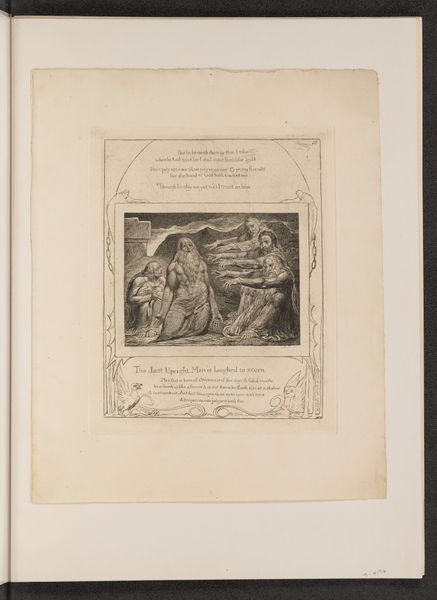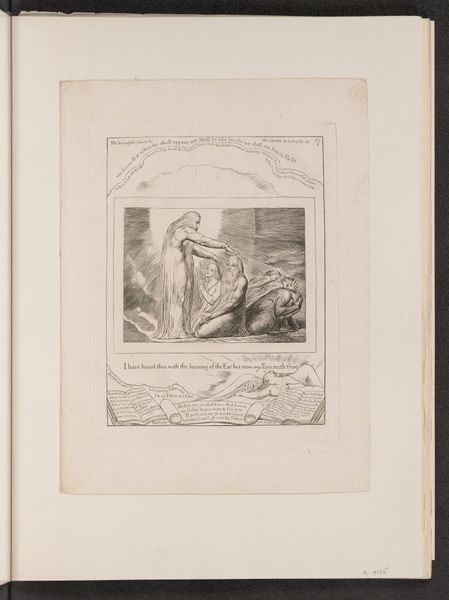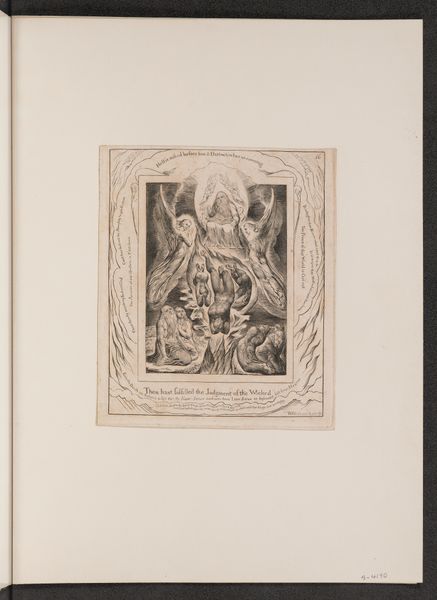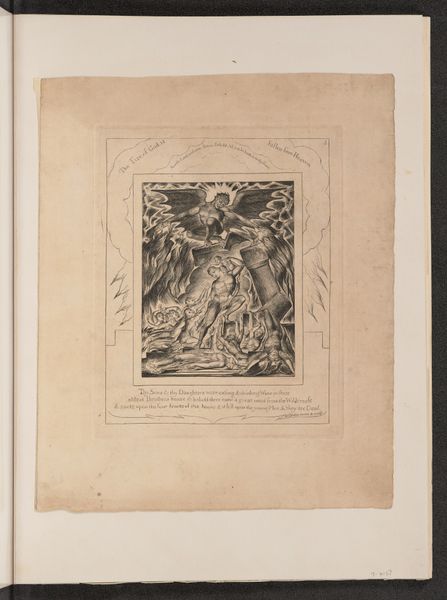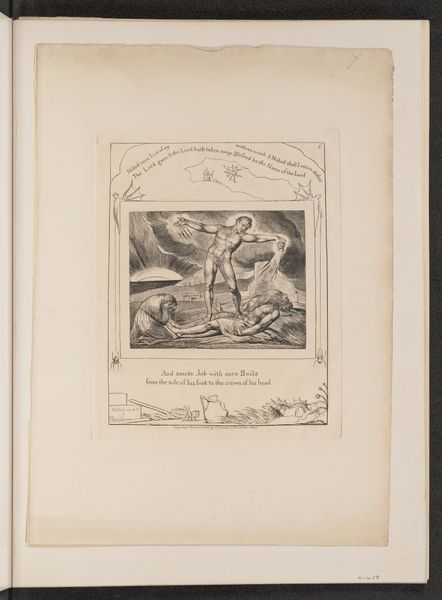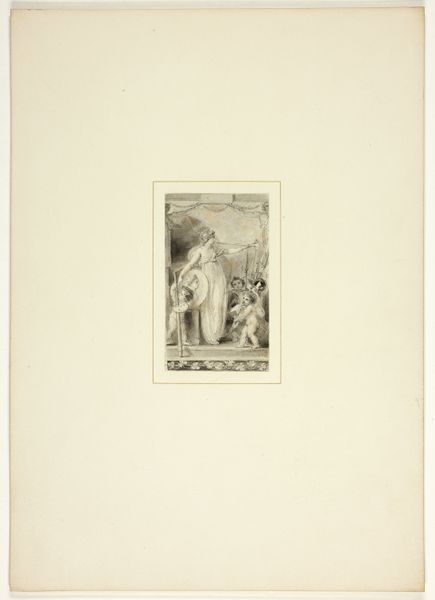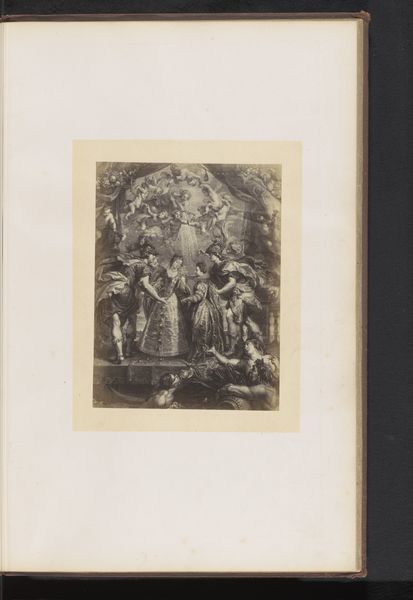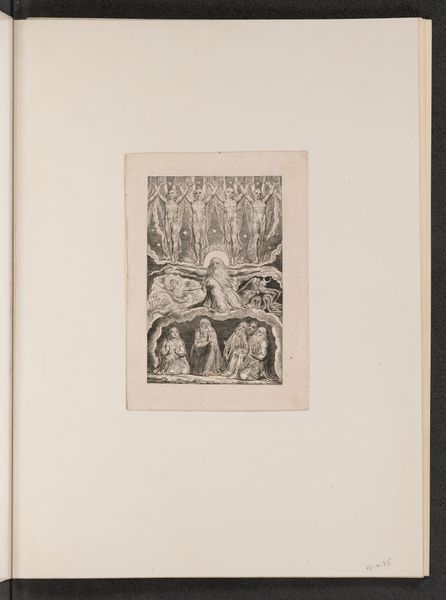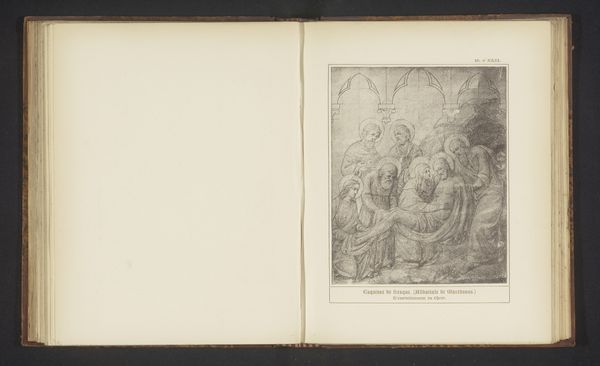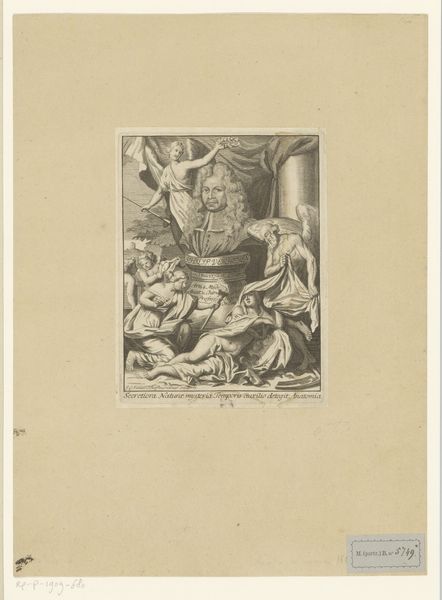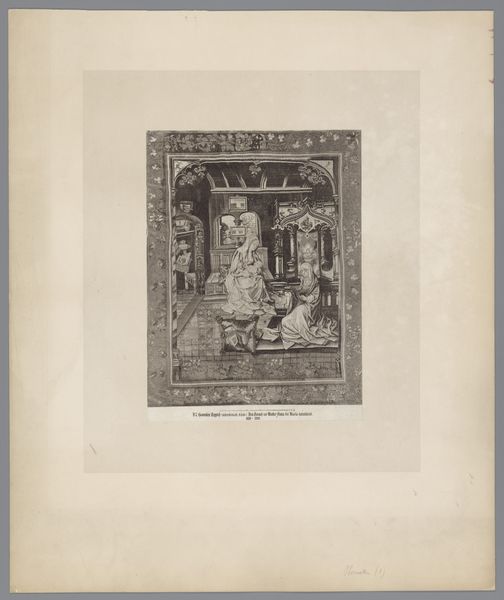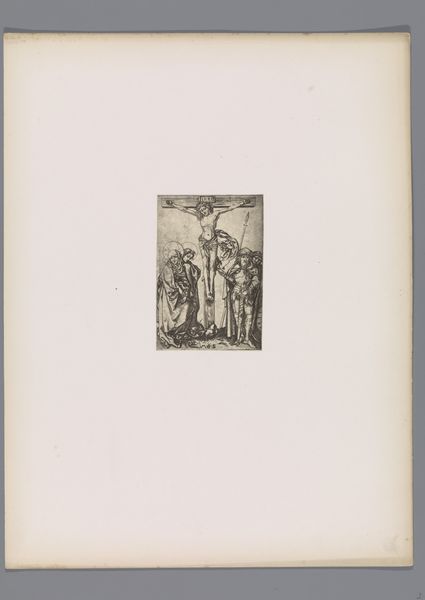
print, paper, ink, engraving
# print
#
figuration
#
paper
#
ink
#
romanticism
#
line
#
history-painting
#
engraving
Copyright: National Gallery of Art: CC0 1.0
Curator: This is William Blake’s "Satan Before the Throne of God," an engraving from 1825, rendered in ink on paper. Editor: Immediately, I'm struck by its stark contrast. The dark, almost frantic energy of the figures below sharply contrasts with the serene, ethereal light surrounding the enthroned figure. It feels charged with tension. Curator: Absolutely. Considering Blake's radical politics and critique of power structures, the positioning of Satan could be seen as a commentary on the established order, a challenge to traditional authority. The date, 1825, situates it within a period of social unrest and calls for reform. Editor: The visual symbolism here is potent. God, surrounded by light, represents divine authority, naturally. But the composition is designed so that our eye follows a descending line from that figure down to Satan, where the energy resides. There are these fascinating details; small symbolic images contained in the border as well as fragments of inscribed text around the scene above. What's it telling us? Curator: That's a critical point. The figures surrounding Satan appear subjugated, reflecting Blake’s broader social commentary on those oppressed by rigid societal norms and oppressive institutions. I see the text not as direct storytelling, but more an exploration of power dynamics present at the time, speaking to hierarchies of the spirit and mind. Editor: Yes, the layering of darkness creates depth and suggests that pain. Consider, too, that God looks unreadable; we cannot parse a facial expression as his features fade with the intense backlight. The message seems more about the effects and reverberations of authority. It is, I believe, not necessarily critical of authority. It asks for acknowledgement of a larger cultural structure; that the throne remains despite the state of revolution or disagreement, chaos even. Curator: Blake's art was often a vehicle for questioning dominant ideologies and championing marginalized voices, using familiar archetypes and narratives. This particular print, therefore, urges viewers to reconsider what they thought they understood. It reframes familiar iconography to question, critique, and ultimately advocate for the marginalized. Editor: An impactful artwork, revealing much more than initial appearances suggest. It prompts contemplation on spiritual continuity regardless of its players, as well as political unrest that would, from the artwork’s creation, go on to change Western civilisation in a big way. Curator: Indeed, a visual argument that compels ongoing interrogation of power, identity, and the very nature of rebellion and social engagement.
Comments
No comments
Be the first to comment and join the conversation on the ultimate creative platform.
